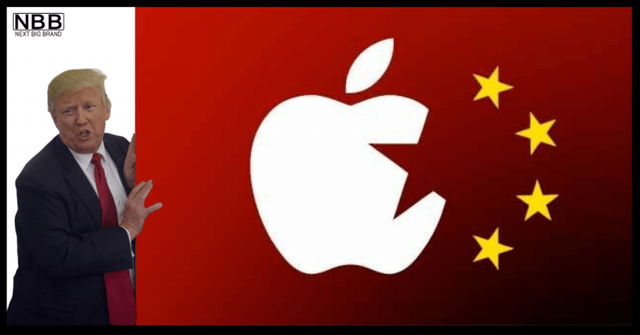
Apple ’s $44 Billion Drop Shows The Growing Cost of Reliance on China
Apple Inc.’s reliance on China is looking increasingly like its biggest handicap.
U.S. President Donald Trump “ordered” American companies to instantly begin searching for solutions to production in China.
The world’s most important electronics firm shed $44 billion in market value on Friday after a couple of Beijing and Washington pronouncements cast a spotlight on its huge Chinese manufacturing base, from which almost all iPhones in the world are made. Apple
According to analyst Daniel Ives of Wedbush Securities Inc., U.S. President Donald Trump “ordered” American businesses to instantly begin searching for solutions to production in China.
In a best-case scenario,” says Ives, “Apple would be able to move away 5 percent-7 percent of iPhone manufacturing from China over the course of 18 months.”
The business would need at least three years to move 20 percent out from China, he adds, which is still less than 25 percent of iPhone manufacturing Apple requires for its U.S. national market. Therefore, American tariffs on Chinese products would have a direct effect on Apple.
Apple’s primary assembly partner, Foxconn Technology Group, stated it has the ability to construct all the U.S.-bound iPhones of the Cupertino company outside of China, but all the signs are that deploying it would take a lot of time and money. In the aftermath of the recent tariff announcements, Apple’s stock price took two big hits on Friday.
People who are acquainted with iPhone production have said that relocating Apple’s iconic device manufacturing in a wholesale way is almost impossible owing to the difficulty of obtaining a qualified workforce elsewhere, a point that Apple CEO Tim Cook has also hammered out in public. Also, significant hurdles are the difficulties of replicating the complicated manufacturing lines and the required infrastructure.
The president’s fierce comments were followed hours later by tweets declaring that the U.S. would increase the rate of the existing and impending tariffs on Chinese goods. Trump’s moves were in response to an earlier announcement that China was planning to impose tariffs on $75 billion of U.S. imports.
While Apple has asked at least some suppliers for proposals on ex-China production, there’s no sign the Cupertino company is preparing for large-scale migration.
The ability of Tim Cook to lobby for tariff relief in Washington will be tested in the coming weeks. He’s been able to get a temporary refund for iPhones, iPads, and Apple laptops so far, which will not be subject to US tariffs until December 15. But in the future, unless an unlikely swift resolution to the trade war is reached, Apple seems to have to draw up extensive plans to build iPhones outside China, however expensive it may be.